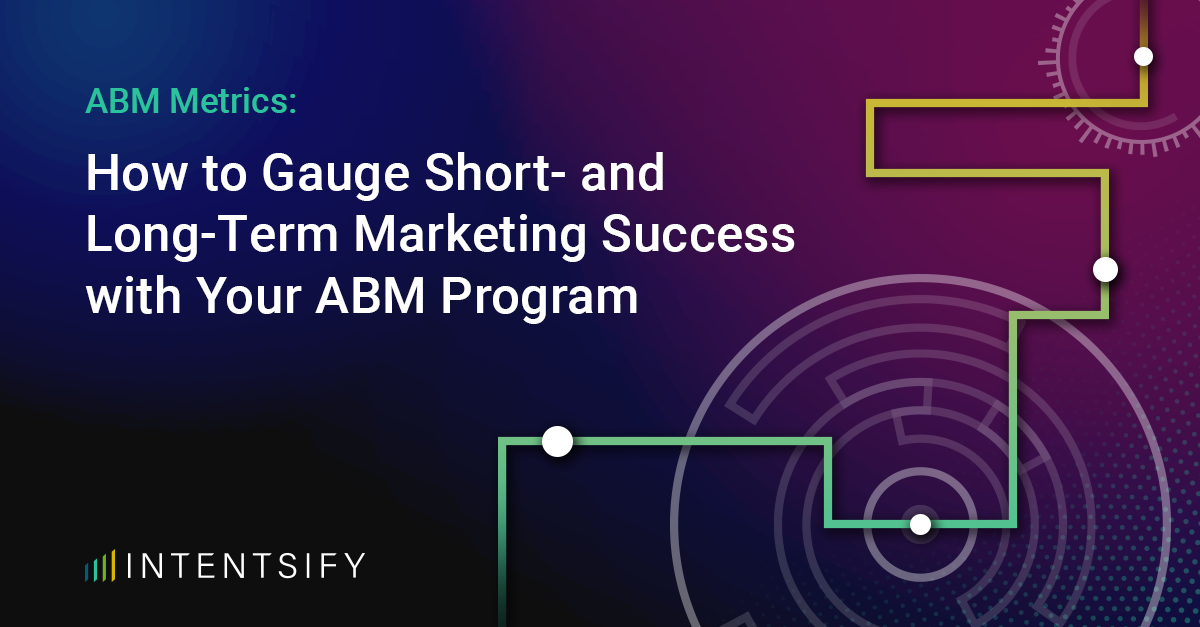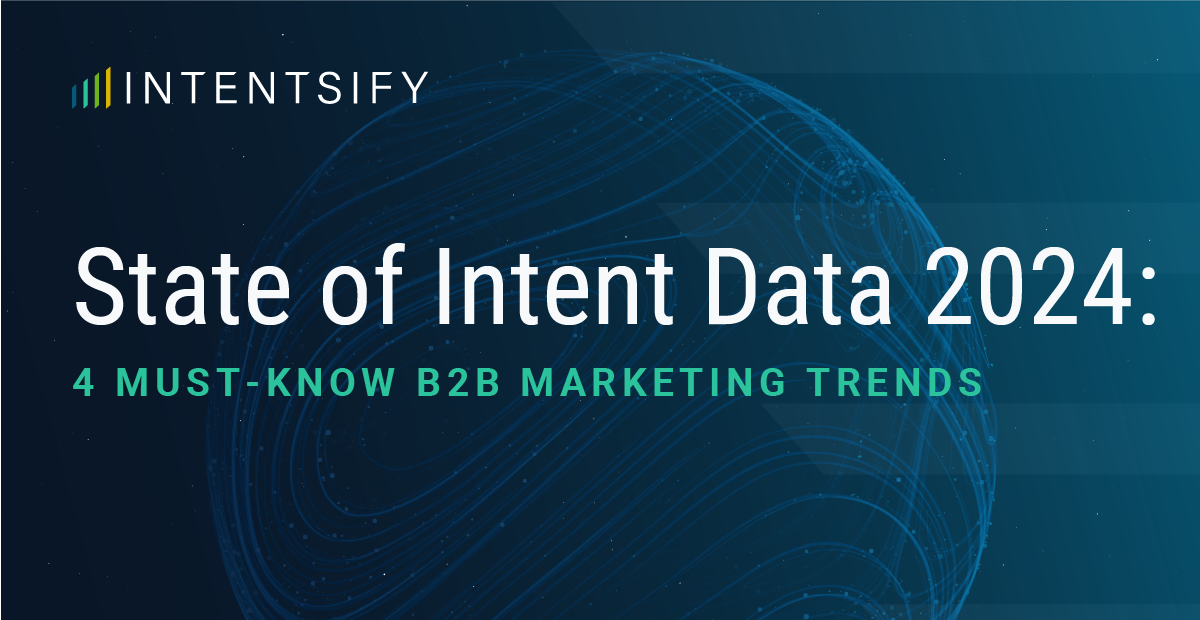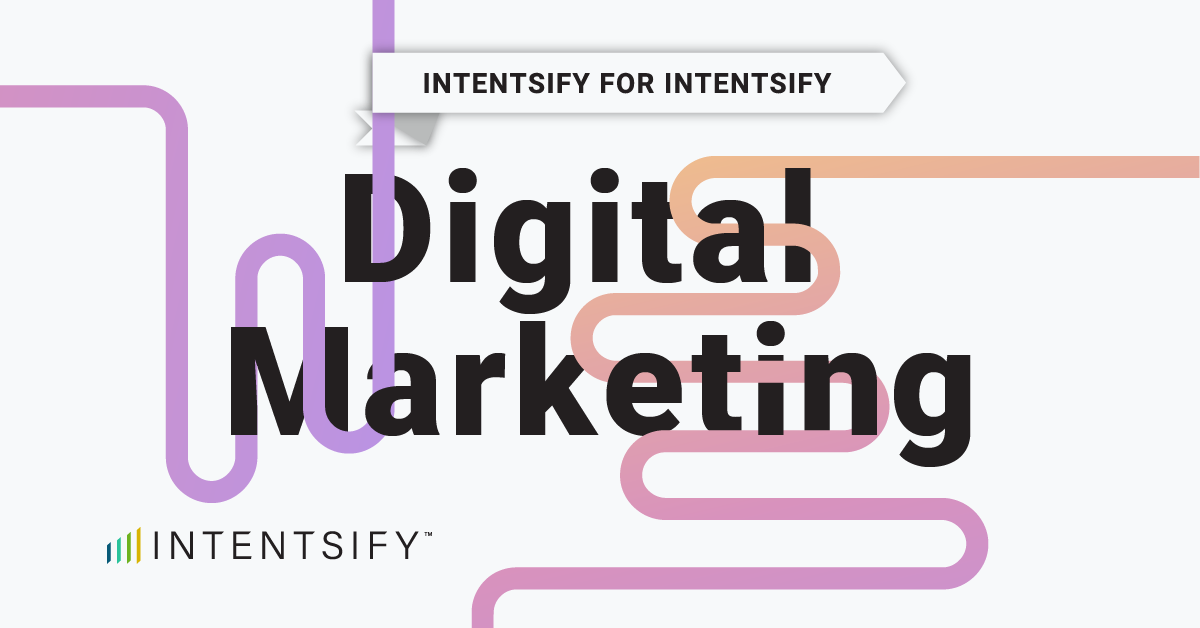“I tried ABM but it didn’t work” is a common statement from B2B marketers. All too often organizations abandon their Account-Based Marketing (ABM) or intent data strategies prematurely. Why? Because they’re not seeing measurable results fast enough.
There’s so much already written about the value of ABM and intent data on metrics such as average deal size and sales pipeline value. It’s proven. But those are long-term ABM KPIs. When organizations fail to see ABM ROI quickly—panic sets in. Leaders begin to question the strategy.
“Are we moving in the right direction?” “Shouldn’t we be seeing some ROI by now?” These questions have caused even the most well-prepared organizations to abandon their ABM and intent data strategies in the interest of generating leads and other short-term sales and marketing KPIs.
If you’re in that situation—don’t panic. Success with short-term ABM KPIs can serve as indicators of long-term ABM success, allowing you to assess whether your program is on the right track.
ABM Preparation Is Critical
Before we dive into short- and long-term ABM KPIs, it’s important to reiterate that planning and preparation prior to embarking on an ABM strategy is critical to success. Having the right processes in place, establishing measurement frameworks, and setting expectations on ABM goals will go a long way in maximizing the rate of return on your ABM programs. Furthermore, applying intent data to various use cases and stages of your buyer’s journey ensures you get the most out of your intent data investment and boost ABM performance.
Short-Term ABM Goals
ABM is a long-term strategy. For B2B organizations with a long average sales cycle, it can take 6 months to a year or longer before there is an ABM ROI impact on sales revenue. Measuring short-term ABM KPIs can help ease uncertainty and assess whether your investments are generating value.
The specific metrics that work for your business vary based on your use cases, but some common short-term ABM metrics to monitor should include:
- Website visits – When organizations focus on a targeted set of accounts with highly relevant messages and content, it can have a significant impact on the volume and quality of website visitors. Tracking website visitors with a solution that de-anonymizes which accounts are visiting your website can help to understand if your ABM targeting efforts are driving the right people to your website.
- Email engagement – ABM can have a significant impact on email engagement from both sales and marketing—especially when combined with intent data. Intent data prioritizes accounts most interested in your products or services, and provides insight into which messages would resonate best. By focusing on reaching decision makers at intent-identified accounts with the right messages, you can expect an increase in email opens, clicks, and overall engagement.
- Ad engagement – Similar to website visits and email engagement, the combination of ABM and intent data should have an impact on ad engagement and conversion rates. Better targeting and messaging to decision makers at target accounts cuts through the noise of irrelevant ads and increases performance.
- Marketing or sales-accepted leads – It may sound counterintuitive to be measuring marketing or sales-accepted leads when you’re running an ABM program, but it can be highly indicative of better account targeting and messaging. Many organizations find that the volume and quality of inbound leads increase from ABM efforts resulting in a higher percentage of marketing or sales-accepted leads.
- Meetings and opportunities generated – Waiting for long-term KPIs like closed deals or revenue is especially difficult for organizations with long sales cycles. But meetings and opportunities are an effective short-term benchmark. Furthermore, many organizations already forecast revenue from the volume of meetings and opportunities generated so this can be a powerful short-term metric that indicates how your ABM efforts are paying off.
- At-risk accounts identified – ABM is not just a pre-sales tactic. For organizations focused on churn prevention and upsell, at-risk accounts identified using intent data is a short-term ABM KPI that gauges the efficacy of those efforts.
Long-Term ABM Goals
Organizations that stay the course with their ABM and intent data investments realize significant long-term value. These results may take 6 months to a year or more before these metrics can be accurately calculated. When tracking these ABM KPIs, it’s important to keep in mind that ABM is not a set it and forget it strategy. If you’re not generating the short- or long-term results you expected or even if you are, you’ll need to continue to monitor and adjust to maximize your ABM ROI.
The most common long-term ABM KPI metrics to monitor include:
- Sales pipeline value – The benefit of ABM is to focus an organization’s go-to-market resources on the highest value accounts. When done well, the volume of target accounts in the sales pipeline increases.
- Average deal size – ABM can have a significant impact on average deal sizes especially when combined with intent data. Intent data helps you identify the highest value and likelihood accounts to prioritize your go-to-market efforts, which results in closing deals that are a greater value to the organization.
- Pipeline velocity and win rate – Pipeline velocity and win rate are both metrics where the combination of ABM and Intent data impacts. Intent data prioritizes accounts most interested in your products or services, and provides insight into the content and messages that are most relevant. When used in ABM programs to focus resources on the right accounts and deliver personalized content or messages, it can move deals through the pipeline faster and increase the likelihood of closing an account.
- Customer retention rate – ABM creates a better buyer experience and stronger customer relationships. That has an impact on customer retention rates. Furthermore, intent data can identify at-risk accounts so customer success teams can manage those relationships before they churn. If an organization is using ABM and intent data to its full benefit, it should see a reduction in customer churn and an increase in retention rates.
- Return on investment – ABM is a significant investment. Tracking ABM ROI is critical to understanding the overall success of the program. It’s also worthwhile to compare ABM ROI to traditional marketing programs to understand if it’s generating a greater return than other programs.
Understanding and measuring ABM metrics is crucial for evaluating the short- and long-term success of your ABM program. While it’s common for organizations to become impatient and abandon their strategies when immediate results are not seen, it is important to monitor and analyze the achievements of short-term ABM KPIs, you can evaluate the overall performance and direction of your program in the long run.






